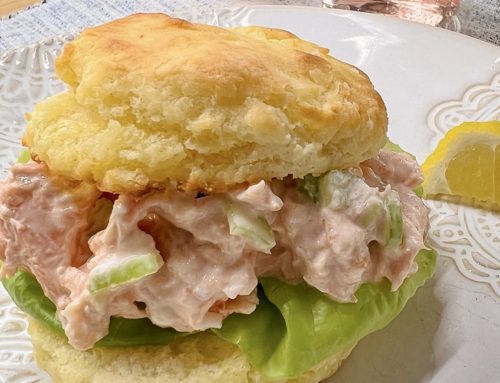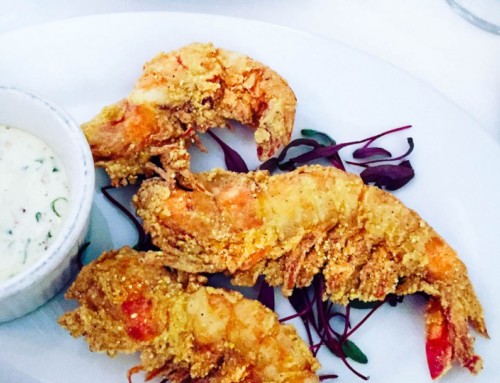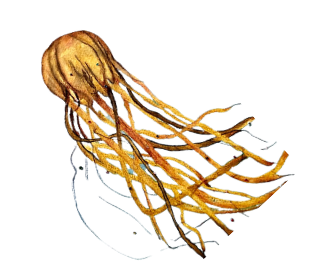Given a choice, which would you prefer? Tornadoes or hurricanes?
I’m guessing neither.
But if you live inland or on the coast in the US, you live with the threat of one or the other eventually.
After another house-shaking, dog-growling, listening to the bowling ball crash of thunder, ice pelting the corner pitch of the roof night (which sounded like it was inside the bedroom), I threw off the covers and tossed in the towel.
While the coffee pot gurgled, I couldn’t shake the impending sensation of doom about the weather. But I felt comfort in having a choice, even if that meant my choice was to get out of bed instead of laying in misery.
After the unbearable, miserable cold winter most of the US suffered this past year, you’d think there is more to write about than the atmosphere. And of course, there is—Sesame Seared Yellowfin Ahi Tuna.
But not just yet.
Still with me?
Great.
Whether you use the term climate change, global warming, or are a climate-denier, without the proper atmospheric and oceanic elements, life, as we know on earth, wouldn’t exist.
Now, that sounds a bit heavy for a tuna post but stay with me, it is all related.
Without a healthy change of seasons and clean oceans, things are bound to go in the wrong direction.
Seafood, and tuna, specifically, are migratory creatures. They need certain oceanic temperatures to eat, reproduce and thrive. When the weather is wonky, which it has been for a while now (unless you live in a cave), the oceans change, too.
This is why we exercise our minds to make the right choices. Take my decision this morning to get out from under the warm blankets and watch the lightning storm, instead of fretting about my throbbing fearful heart, waiting for a tornado to hit.
I digress.
Make the responsible choice and buy sustainable tuna
- Know what species is acceptable to buy and which isn’t.
- Follow seafood guides like Monterey Bay Aquarium’s Seafood Watch.
- Shop where you know the fish is sourced from reputable fishers.
The tuna I used for my Seared Sesame Tuna recipe is Yellowfin ahi tuna.
Do other tuna species (bluefin and bigeye) taste better? It’s a matter of opinion.
Are there less expensive cuts of tuna? Yep, there’s sashimi tuna—the cold-smoked, super-bright pinkish-red tuna found in most grocery stores. And there’s also albacore tuna, the white-ish pale pink tuna, which is harder to source when you live in the middle of the country.
But know this. Bluefin tuna fisheries are overfished and use fishing methods that harm the environment. Given the chance to recover, those fisheries should thrive.
Small, everyday actions matter. You can make a difference with your choices. Think about your carbon footprint. How big of an imprint do you want to make?
That’s another can of corn though and fodder for another post.
For today, please consider your options the next time you shop for tuna. Stay safe.
Seared Sesame Seared Yellowfin Ahi Tuna with Slaw
Serves 2
Cook’s note: To save time, make the slaw and sauces ahead, but don’t add the vinegar to the slaw until you are ready to cook.
Ingredients
¼ head Napa cabbage, sliced thin, or shredded
¼ side of orange bell pepper (or red or yellow), cut into slivers
2 tablespoons flat-leaf parsley, chopped
1 teaspoon sugar
1 tablespoon champagne vinegar, plus 1 teaspoon (optional)
Dash Kosher salt
Dash fresh ground black pepper
1 green onion, chopped
1 tablespoon olive oil
8 ounces Yellowfin Ahi Tuna, cut in half
2 tablespoons black sesame seeds, plus more if desired
½ avocado, or 6 ounces avocado purée
1 tablespoon sour cream
½ teaspoon Sriracha sauce
2 tablespoons light mayonnaise
Kirin sauce, or soy sauce (for dipping-both optional)
Directions
- In a medium bowl, add cabbage, bell peppers, parsley, and sugar. Stir.
- Sprinkle 1 tablespoon champagne vinegar over slaw. Stir. Add an additional teaspoon if needed.
- Season with salt and pepper. Taste and add more salt to balance out the sugar as desired.
- In a small bowl, mix the avocado and sour cream. Place mix in a sealable plastic baggie. Snip the end of one corner of the baggie when you’re ready to serve and pipe on the tuna.
- In another small bowl, mix the mayonnaise and Sriracha sauce. Repeat the same process with the baggie.
- To save time, both sauces can be made up to one day ahead.
- Sprinkle salt and pepper on both sides of tuna.
- Either put sesame seed on a plate and press tuna into the seeds or sprinkle the seeds over the top and bottom of each side of the tuna. Either way, press the seeds into the flesh.
- In a ten-inch skillet, heat olive oil on medium heat for about three to four minutes (depending on your heating element) When the oil shimmers, place the tuna in the skillet, sesame side down.
- Depending on the thickness of your tuna, sear for two minutes (or less for thin cuts).
- Turn and sear the other side of the sesame crusted tuna for the same amount of time (or less).
- The beauty of searing tuna in a skillet is you can see how quickly it cooks. Remove from heat at desired doneness.
- Let the tuna rest for a few minutes while you plate the slaw.
- Cut the tuna into thin slices.
- Arrange on top of slaw.
- Pipe sauces on tuna or on the side. Serve with Kirin sauce (for a citrus flavor) or soy sauce (for a salty flavor.)








